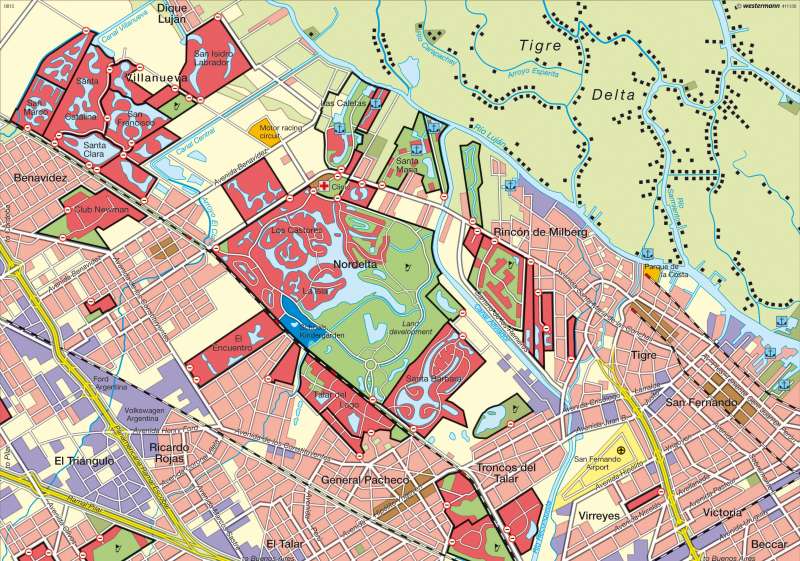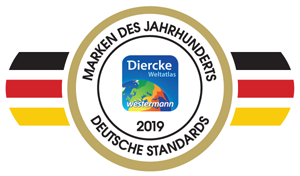Segregation in Buenos Aires — Gated communities (Barrios privados)
South America
978-3-14-100790-9 | Page 151 | Ill. 4

Information
Beginning in the late 1980s, substantial parts of the greater Buenos Aires metropolitan area were transformed through private-sector initiatives. The key elements of this post-modern urban development process included new highway construction, the creation of private industrial parks, shopping centres and recreation facilities and the development of new gated residential estates in urban and suburban settings. Suburban developments alone cover an area half again the size of the city of Buenos Aires (Capital Federal). These major housing projects encompass several thousand housing units with integrated shopping centres.Nordelta
Nordelta is a private, limited-access city in the northern Buenos Aires metropolitan area. The district is part of the community of Tigre and borders on the attractive landscape of the Tigre Delta. Formerly owned by the state and largely unsettled due to periodic flooding, the land was privatized during the 1970s. A prerequisite for urbanization was the excavation of a number of man-made lakes, which raised the level of the adjacent building land by four metres. The original idea of a socially heterogeneous city for 140,000 inhabitants from all social classes was abandoned in the early 1990s in favour of the concept of a private city for 80,000 people. The necessary infrastructure measures were carried out with private-sector funding. The new building plan calls for the construction of several independent, self-contained neighbourhoods, each of which will represent a separate barrio privado. Three integrated public complexes with sport and recreational facilities, a shopping centre, schools and kindergartens are to be created at the same time. Each private city is to be built around a central lake with a highly irregular shoreline and an area of approximately 170 hectares. The Nordelta district also encompasses more than 300 hectares of green space. The area is accessible via a four-lane highway. Security checks are performed at highway exits and other entrances and between the neighbourhoods themselves.
Nordelta exhibits nearly all of the functions of a complete city. The primary target group is composed of young families seeking a quiet suburban living environment. This new, appealing residential setting is also a product of clever marketing strategies employed by real-estate firms and the print media. One of the first neighbourhoods to be completed was the Los Castores estate in the North. The nearly 600 lots have an average size of 1,100 square metres. The La Isla estate to the south is the most exclusive residential development in Nordelta. Forty of the more than 270 lots have areas of over 5,000 square metres.
The first new residents moved to Nordelta in 2001, and more than 100 households were established within the first year. By 2006, 1,500 houses were occupied by roughly 5,000 residents. According to current plans, housing for 80,000 people is to be ready for occupancy by 2015.
H. Kiegel; Ü: J. Southard




